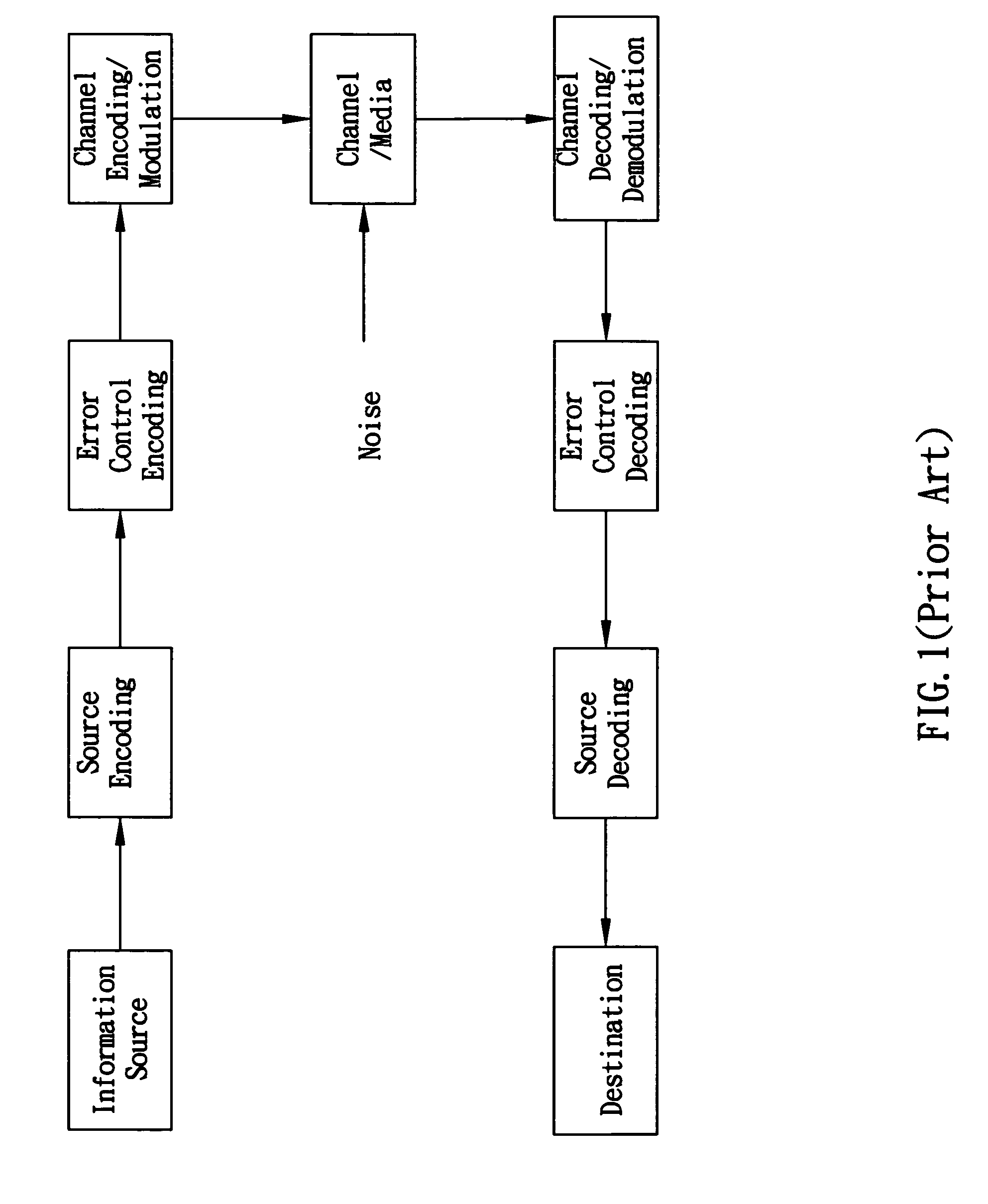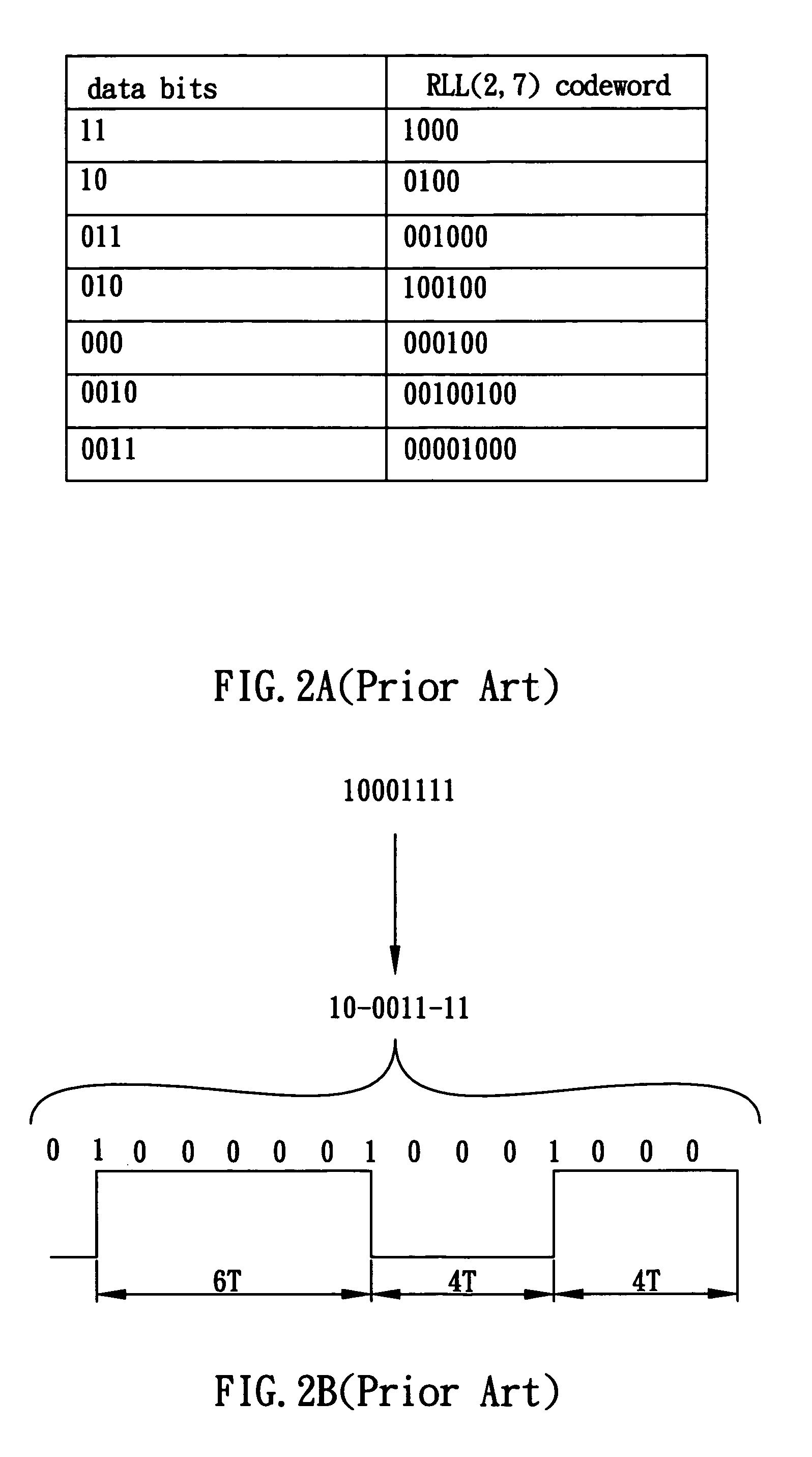Error correction for RLL channel bits in demodulation rules
a demodulation rule and error correction technology, applied in the field of error correction methods for rll codes, can solve the problems of code without error correction capability, inability to distinguish between error control coding and channel coding, and inability to correct data sequences
- Summary
- Abstract
- Description
- Claims
- Application Information
AI Technical Summary
Benefits of technology
Problems solved by technology
Method used
Image
Examples
Embodiment Construction
[0025]Some preferred embodiments of the present invention will be described in detail in the following. However, beside the detailed description, the present invention can also be applied widely in other embodiments and the scope of the present invention is only limited by the appended claims.
[0026]The legal signal components for a RLL(x,y) encoded codeword are between (x+1)T and (y+1)T. For example, 2T–8T signals are legal, but 1T, 9T, 10T, . . . are illegal for RLL(1,7) code. If a data sequence encodes in RLL(x,y) code, its legal bit sequence should be between (x+1)T to (y+1)T, wherein x, y are natural integers and x is smaller than y. After transmitting to the receiver or reads out from the storage device, the received bit sequence may consist of illegal signal components (i.e., receives 1T signal components for RLL(1,7) encoded bit sequence). In other words, when the legal bit sequence is modulated to a channel, because the channel may induce noise, sometimes the received channe...
PUM
 Login to View More
Login to View More Abstract
Description
Claims
Application Information
 Login to View More
Login to View More - R&D
- Intellectual Property
- Life Sciences
- Materials
- Tech Scout
- Unparalleled Data Quality
- Higher Quality Content
- 60% Fewer Hallucinations
Browse by: Latest US Patents, China's latest patents, Technical Efficacy Thesaurus, Application Domain, Technology Topic, Popular Technical Reports.
© 2025 PatSnap. All rights reserved.Legal|Privacy policy|Modern Slavery Act Transparency Statement|Sitemap|About US| Contact US: help@patsnap.com



